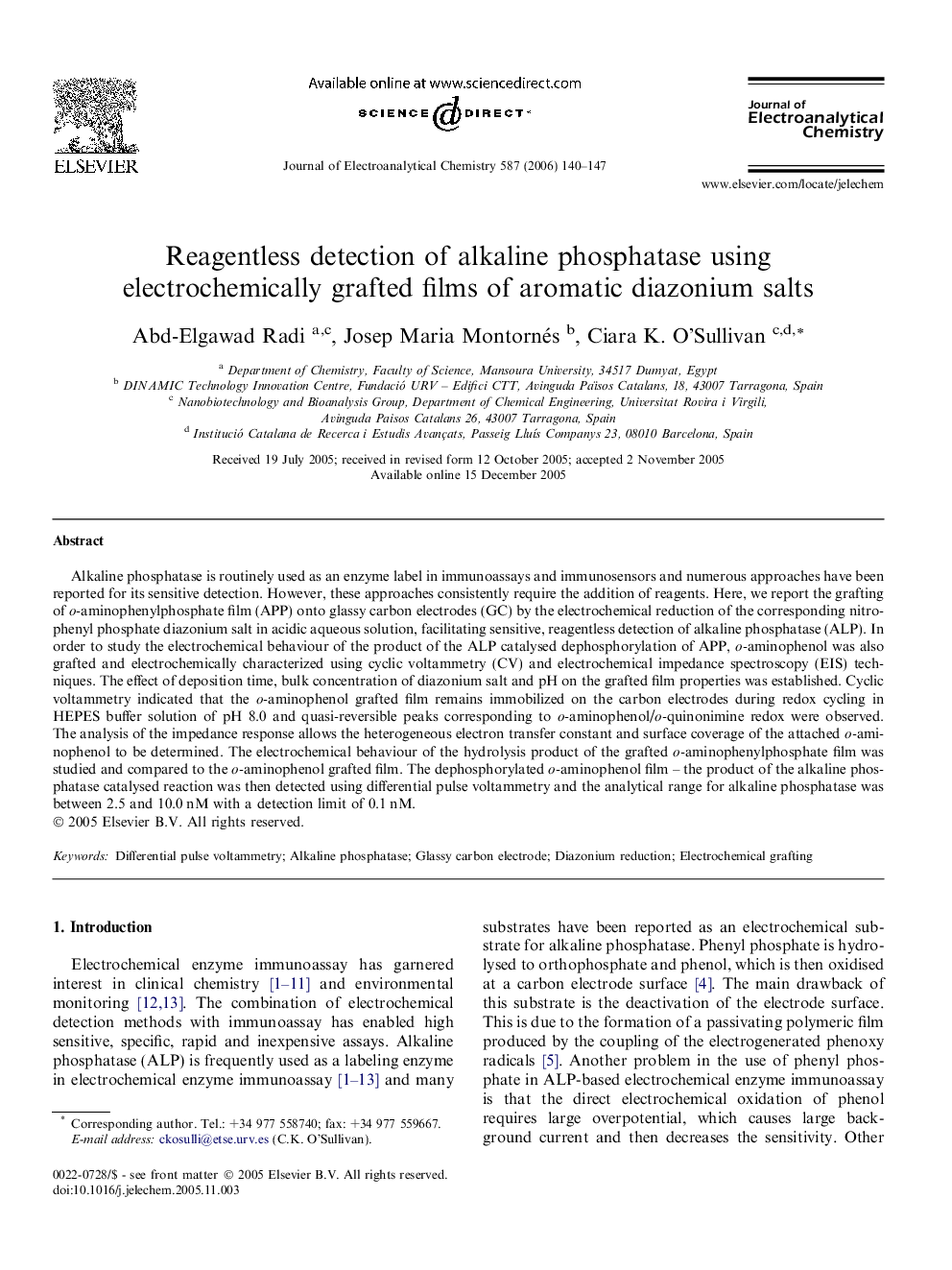| Article ID | Journal | Published Year | Pages | File Type |
|---|---|---|---|---|
| 221496 | Journal of Electroanalytical Chemistry | 2006 | 8 Pages |
Alkaline phosphatase is routinely used as an enzyme label in immunoassays and immunosensors and numerous approaches have been reported for its sensitive detection. However, these approaches consistently require the addition of reagents. Here, we report the grafting of o-aminophenylphosphate film (APP) onto glassy carbon electrodes (GC) by the electrochemical reduction of the corresponding nitrophenyl phosphate diazonium salt in acidic aqueous solution, facilitating sensitive, reagentless detection of alkaline phosphatase (ALP). In order to study the electrochemical behaviour of the product of the ALP catalysed dephosphorylation of APP, o-aminophenol was also grafted and electrochemically characterized using cyclic voltammetry (CV) and electrochemical impedance spectroscopy (EIS) techniques. The effect of deposition time, bulk concentration of diazonium salt and pH on the grafted film properties was established. Cyclic voltammetry indicated that the o-aminophenol grafted film remains immobilized on the carbon electrodes during redox cycling in HEPES buffer solution of pH 8.0 and quasi-reversible peaks corresponding to o-aminophenol/o-quinonimine redox were observed. The analysis of the impedance response allows the heterogeneous electron transfer constant and surface coverage of the attached o-aminophenol to be determined. The electrochemical behaviour of the hydrolysis product of the grafted o-aminophenylphosphate film was studied and compared to the o-aminophenol grafted film. The dephosphorylated o-aminophenol film – the product of the alkaline phosphatase catalysed reaction was then detected using differential pulse voltammetry and the analytical range for alkaline phosphatase was between 2.5 and 10.0 nM with a detection limit of 0.1 nM.
